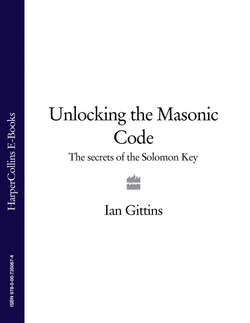Читать книгу Unlocking the Masonic Code: The Secrets of the Solomon Key - Ian Gittins - Страница 18
The Cooke Manuscript
ОглавлениеThe second most important medieval document in Freemasonry is the Cooke Manuscript, named after its 1861 translator and editor, Matthew Cooke. Written around 1450, this instructional tome was penned by a Mason rather that a priest, and contains many of the central pillars of Masonic lore. As well as describing the building of King Solomon’s Temple, the manuscript also concerns itself with Masonic symbolism and ritual and was clearly highly influential on the philosophy and minutiae of modern Freemasonry.
no-longer-mysterious flying buttress were laid bare for all to see.
As the Masons came to terms with no longer being workers of modern miracles, their chief patron was also in trouble. The Roman Catholic Church, for so long all-conquering across Europe, faced dissent wherever it turned, with Martin Luther sparking the Protestant Reformation in Germany in 1517 and King Henry VIII breaking all British ties with Rome in 1534. The Church was suddenly in no position to order more cathedrals to be built.
Even if they had done so, they might not have been Gothic ones. The third and final blow to Freemasonry’s standing was that the Gothic style, so dominant since the 1100s, was being supplanted by a return to the simpler classicist values of Roman architecture. Suddenly Masons were running short of work. They would never again recover their position as the most elevated and valued manual workers in the land.
